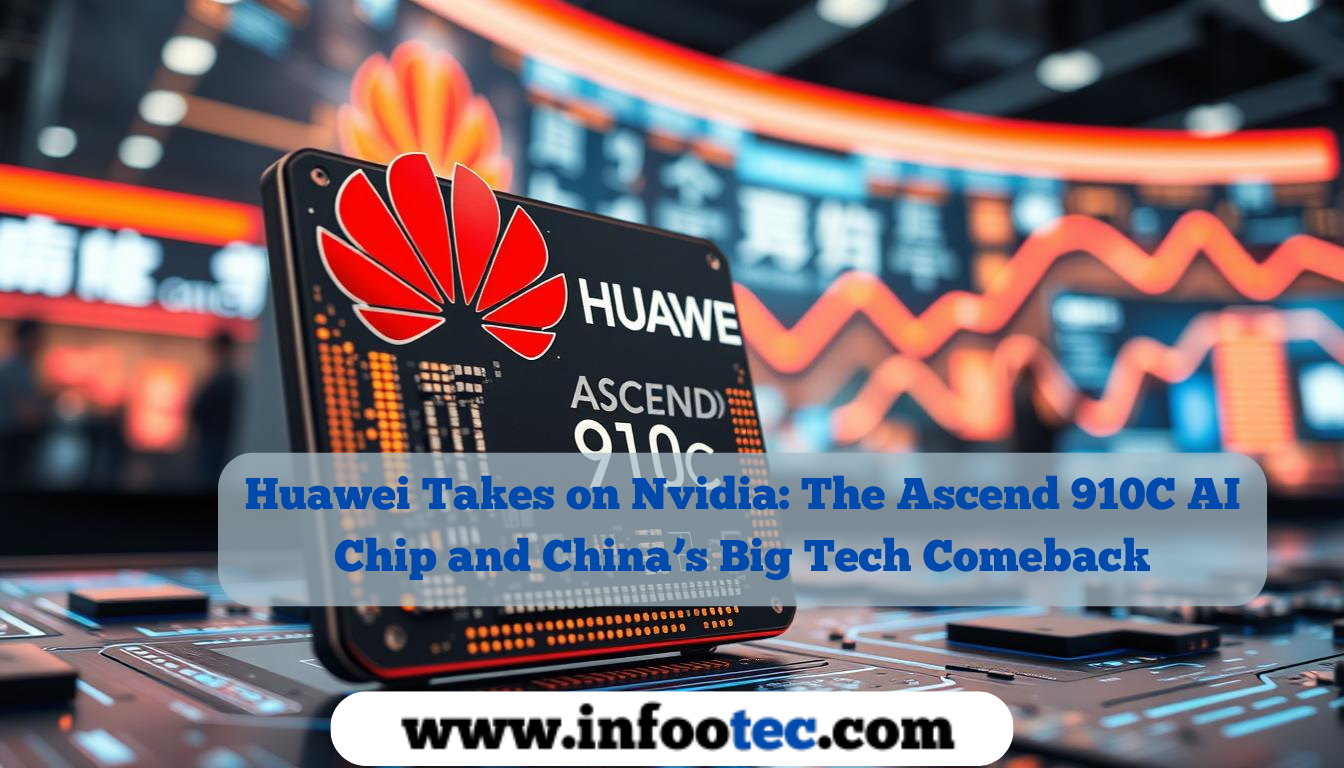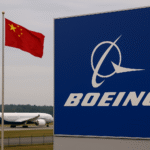Huawei Takes on Nvidia: The Ascend 910C AI Chip and China’s Big Tech Comeback
In the ever-evolving world of artificial intelligence, China’s tech giant Huawei is making a bold move to reclaim its position as a global innovator. With the recent unveiling of the Ascend 910C — an upgraded version of its AI processor — Huawei is not only confronting the hardware limitations imposed by U.S. sanctions but also setting its sights directly on Nvidia, the current king of AI chips.

This is not just another product release. It’s a strategic pivot, a technological gamble, and perhaps the clearest sign yet that Huawei intends to shape the future of AI hardware — on its own terms.
A Turning Point for Huawei
The announcement of the Ascend 910C comes at a critical time. Since 2019, Huawei has been under intense pressure from U.S. sanctions that limited its access to cutting-edge semiconductor technologies, particularly those involving chip design and manufacturing. These restrictions not only forced Huawei to adapt its supply chains but also catalyzed a massive investment in domestic R&D.
Rather than retreating, Huawei doubled down. With the release of the Ascend 910C, it has delivered a signal to the world: China’s most recognized tech brand is back in the AI race — and it’s not coming quietly.
What Is the Ascend 910C?
The Ascend 910C is a second-generation AI processor built by Huawei’s chip division, HiSilicon. It’s the successor to the original Ascend 910, which debuted in 2019 and was, at the time, touted as the world’s most powerful AI processor. However, the geopolitical landscape has since shifted dramatically, and with the 910C, Huawei aims to regain its technological edge.
Key technical features of the Ascend 910C include:
- Improved processing power for AI training and inference
- Enhanced energy efficiency to compete with Nvidia’s best-in-class chips
- Deep integration with Huawei’s MindSpore AI framework, enabling optimized end-to-end AI development
Huawei has emphasized that the Ascend 910C is designed not just to match, but to exceed Nvidia’s performance in certain AI workloads, particularly in natural language processing and computer vision.
Taking Aim at Nvidia
For years, Nvidia has dominated the global AI chip market with its powerful GPUs and the CUDA software platform, which remains a staple in data centers and research labs worldwide. But Huawei is aiming to chip away at that dominance — quite literally.
Huawei’s strategy isn’t just about raw performance. It’s about ecosystem control. By integrating the Ascend 910C with MindSpore, Huawei hopes to create a seamless, vertically integrated AI stack — from chip to software to application — entirely within China’s tech infrastructure.
This tight integration is Huawei’s answer to Nvidia’s CUDA ecosystem. It gives Chinese developers a homegrown alternative to build advanced AI models without relying on foreign software or hardware.
Strategic Timing and Global Implications
The timing of this launch is anything but accidental. As demand for AI computing power continues to skyrocket — driven by the rise of large language models like ChatGPT and generative AI tools — the shortage of high-end chips has become a critical issue for many countries.
China, in particular, has prioritized technological self-reliance in semiconductors as a national strategic goal. Huawei’s Ascend 910C fits directly into that vision, offering an indigenous alternative that aligns with government policies and market needs.
Moreover, this move could reshape global supply chains. If Huawei succeeds in scaling up production and adoption of its Ascend chips, it could reduce Chinese dependency on U.S.-made chips, while also opening new markets across Asia, the Middle East, and Africa.
Domestic Reception and Industry Adoption
Early reports from within China suggest strong interest in the 910C. Major Chinese cloud providers and AI companies — including Tencent, Baidu, and iFlytek — have begun pilot programs to test the chip’s capabilities in real-world applications.
Government-backed labs and research centers are also expected to incorporate the Ascend 910C into their infrastructure, further embedding Huawei into China’s AI ecosystem.
By positioning the Ascend 910C as a national champion product, Huawei is likely to receive broad institutional support, which could accelerate adoption despite the global dominance of Nvidia.
Challenges Ahead
While the Ascend 910C represents a technological leap for Huawei, it doesn’t come without challenges.
- Manufacturing Capacity: Due to U.S. sanctions, Huawei cannot access cutting-edge foundries like TSMC for chip production. This means the 910C is likely manufactured using older node technology, which could limit performance scalability.
- Software Ecosystem: Nvidia’s CUDA has a decade-long head start. Huawei’s MindSpore is still maturing, and building a robust developer community around it will take time.
- Global Reach: Huawei’s brand has been impacted by political tensions, particularly in Europe and North America. While the Ascend 910C might perform well in China and select allied markets, penetrating the global AI chip market remains a tall order.
A Broader Shift in Tech Geopolitics
The unveiling of the Ascend 910C is part of a broader movement in which nations and corporations are reassessing their tech dependencies. The AI race is no longer just about innovation — it’s about sovereignty, control, and resilience.
Huawei’s chip launch sends a message that Chinese firms are not only surviving but actively innovating under pressure. It also highlights a shift in global tech competition, where alternatives to U.S.-dominated hardware ecosystems are becoming more viable — and more strategic.
Looking Ahead
The Ascend 910C won’t dethrone Nvidia overnight. But it marks a significant moment in the evolution of the global AI chip landscape. As AI continues to shape industries from healthcare to finance to autonomous vehicles, the hardware powering these applications will become even more critical.
For Huawei, this is more than a comeback. It’s a calculated bet on the future of AI — one where it plays a leading role, not as a follower of Western innovation, but as a pioneer of its own path.



